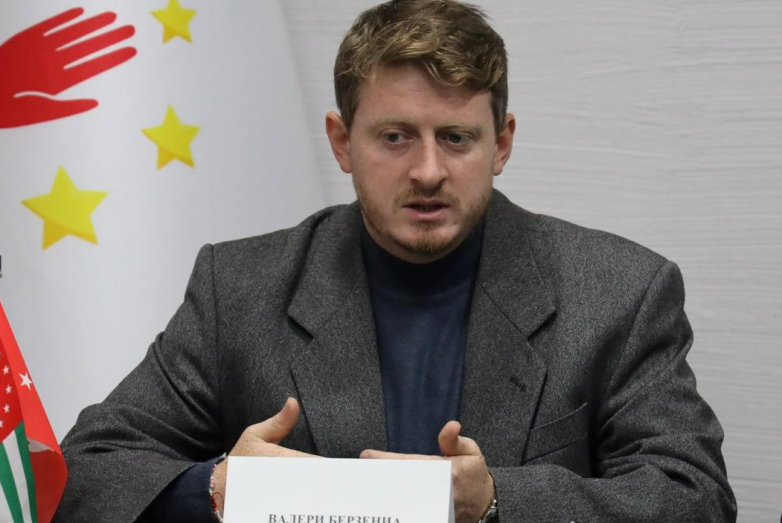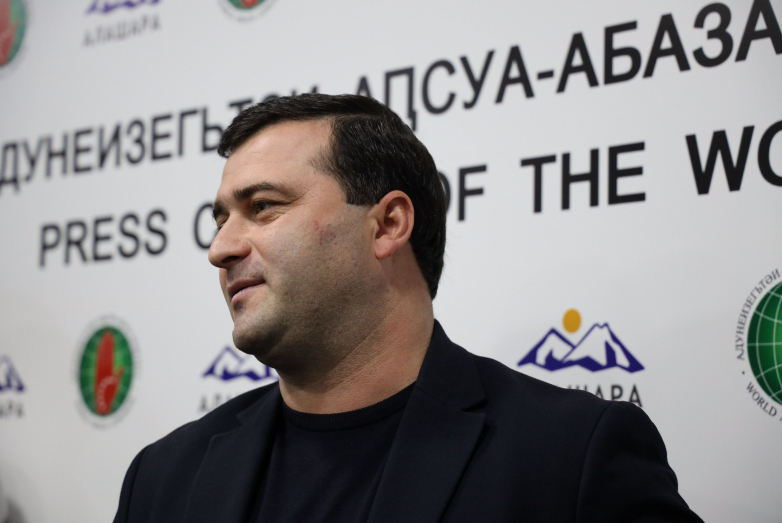The premiere took place at the office of the World Abaza Congress on November 23. The picture was made as part of the Amazara project.
Alisa Khutaba
The film "Aimtsakiachara" film was presented by the director Beslan Lagulaa, the author of the project Valery Berzenia and the chief referee and coach of the national games Adgur Gumba.
The meeting was also attended by the Chairman of the State Committee for Youth and Sports Tarasch Khagba, Chairman of the Committee for Youth Affairs and Sports of the Sukhum Elza Khagba, Head of the Department of Physical Culture and Sports of the ASU Kyagu Dzheniia, ASU students, as well as participants in the tournament - representatives of the Chlou village.
The presentation was opened by the head of the WAC department for the development of youth and physical culture Valery Berzenia. He told how the idea of the game arose, how they decided to shoot the film, and then, step by step, created it.
“Interest in national games came a long time ago, and our goal is to introduce it to the masses. The film that we present to your attention today is not a feature film, it is more a guide for everyone who is interested in the history of the game of Aimtsakiachara and just wants to play this fascinating sport. We ourselves studied this game, played it, and only then showed it to the people. This is how we reached the level of a small tournament, and we have far-reaching plans. The interest of young people that we invited to participate in the tournament is incredibly high. I am sure that we will definitely see the fruits of work in decades,” Berzenia said.
The director of the film talked about the locations in which the filming took place, about the small difficulties that arose in the process, about how he himself personally took part in the filming as a player. He also thanked the WAC for the very idea and organizational work, noting the importance and significance of preserving national games as an intangible cultural heritage.
In the Aimtsakiachara movie itself, the narrator (played by the actor of the Abkhazian Youth Theater Said Kamkia) and historian Viktor Avidzba introduce the viewer to the basic rules and features of the game. The film clearly demonstrates how games are played, what props are needed.
The history of the development of this sport goes back to the past millennium. It is mentioned in the Caucasian epic about Narts, where the young daughter-in-law of the family twisted a ball (from ox-wool), with which the Nart played aimtsakiachara. The game was an element of the educational system. It was supposed to help develop patience, dexterity and strength, as well as the ability to think and listen. It developed the strength of spirit and body, contributed to the physical training of the warrior. All the main festivities in the life of the Abkhazian society were accompanied by Aimtsakiachara competitions.
The audience liked the film about the most popular national game of the Abkhazians and it caused a lively discussion. Representatives of the Department of Physical Culture and Sports of the ASU were suggested to introduce national games as a separate discipline - for university and school students. The participants also discussed the possibility of creating a federation on national sports.
Guest of the presentation, Chairman of the State Committee for Youth Affairs and Sports Tarasch Khagba, expressed his readiness to continue to cooperate and support in the implementation of such projects. In conclusion, the head of the Sukhum branch of WAC Temur Rekvava thanked everyone for participating in the creation of the film.
“On behalf of the Chairman of the Supreme Council of the WAC Mussa Ekzekov and the WAC team, I would like to thank everyone involved in the creation of the film. Brief and concise, it tells both the story and tactics. Thank you for your work, for your vision, which is so closely and subtly conveyed through the screen! I am sure that national games have a future!” Rekvava said.
The film will be available in the coming days on TV and on the official website of the WAC.


to login or register.